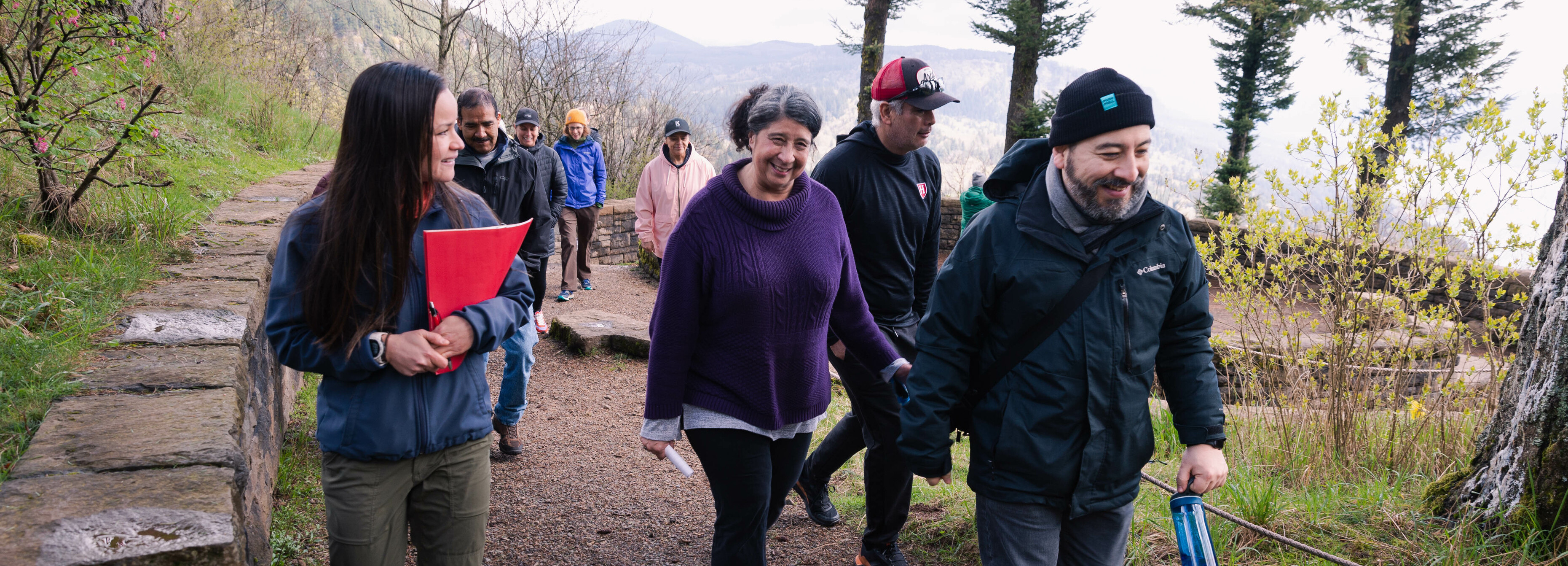In the spring of 2020, as the COVID-19 pandemic arrived, Friends faced the urgent challenge of quickly shuttering two of the organization’s most popular programs—our volunteer stewardship activities and our educational guided hikes and outings.
The past two years have been difficult on many fronts, but they’ve also provided Friends’ staff an important opportunity for reflection. As we looked beyond the pandemic, it was clear that returning to the way we had done things before wouldn’t be the right approach for either the stewardship or outdoor programs. Thinking outside that box, innovation would shape how we could relaunch those programs after a long hiatus.
A new approach to stewardship
Friends’ stewardship program is widely popular with volunteers and Gorge land managers alike. But in stewarding the Gorge today, organizing more and more work parties just isn’t the answer. The challenges are too great and the resources too limited. Habitat restoration takes time, and many activities are best accomplished over months or longer, not in a single day.
In 2021, as the pandemic wore on, we cautiously launched a pilot program of volunteer land stewards. The vision was to engage volunteers by assigning them ongoing management tasks at specific natural areas across the Gorge. The idea of having stewards “adopt” a place to care for represents a safer, more convenient way to engage our long-term volunteers. The approach will reduce the overall number of large work parties, but it will noticeably improve the volunteers’ ecological impact and reduce the administrative load on our limited stewardship staff.
This new approach is providing individual volunteers with greater flexibility and a greater relationship to the land. It will be an important next step for our land trust in deepening connections with Gorge community members interested in more fulfilling, hands-on land stewardship experiences.
Increasing outdoor access and inclusion
As one of Friends’ oldest programs, our guided educational hikes and outings have been our key public education tool for decades. Then, in 2017, the Eagle Creek fire forced us to quickly move past that on-the-trail approach. We pivoted to creating a public series of community forums, organized with local partners. The forums explore issues from wildfire impacts to the links between art and conservation. Thousands have attended.
In 2020, the pandemic forced us to move completely online for public engagement. Again, the pressures of adversity led us to innovate, and our new public webinars have been widely successful, engaging more than 3,000 participants in the past two years. Moving ahead, we plan to offer both virtual and in-person public forums—public education tools that don’t add more people to the trails or more traffic to the Gorge.
As we relaunch our outdoor programs, we’ll focus on a balanced approach that reduces the size and frequency of our guided hikes and outings, yet increases access and inclusion. This will include reducing our overall number of outings; leading smaller hike groups; and developing further collaborations with local BIPOC, LGBTQIA+, and other recreation groups with whom we’ve deepened relationships during the pandemic. Our efforts will build on work that Friends started years ago to offer a wider array of activities, including family-friendly outings and art and culture-based outings that appeal to individuals beyond the Portland-based hiking community.
Focusing on the future
The changes we’ve outlined represent a natural progression. Friends has grown and changed a lot in four decades, and especially over the past five years. We’ve also faced significant challenges, from the Eagle Creek fire to the coronavirus pandemic—challenges that have tested how well our public engagement programs actually work. The changes we’re rolling out this summer are crucial steps in building programs tailored to the challenges of today, that will also create a stronger foundation for success in the years ahead.
It is our hope that these new models will open the doors for new participants, while continuing to engage Friends’ long-term supporters and volunteers in ways they’ve enjoyed in years past.

